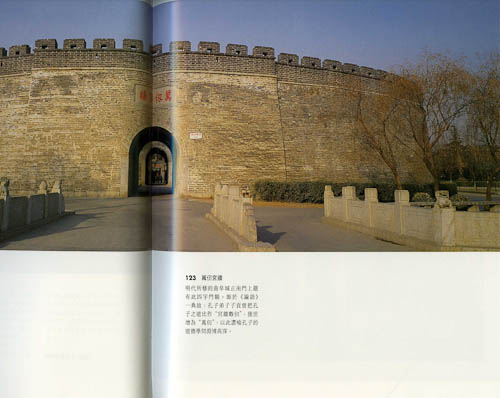A book held in the Freer-Sackler Library, Qi Lu Wen Hua, describes historic sites and cultural relics from the ancient states of Qi and Lu, which was the home state of the Chinese sage Confucius.
This image from the book shows part of the ancestral temple complex of Confucius's family in Chufu including four Chinese characters written in calligraphy above the wall gate. The characters shown, "Wan Ren Gong Qiang", are a reference to an interesting event reported in the collection of sayings known as the Analects of Confucius.
The story goes that a Lu official once said that Confucius's disciple Zi Gong was more virtuous than his master. On hearing this, Zi Gong said that if you compared each of them to a wall, he would only reached to the shoulder height and therefore it was very easy to see his virtues. However his master's wall was many "ren" (a Chinese measure word) high, so that only if you were admitted through the gate could you see the beauty of the ancestral temple inside, or the riches of the officials there. Being that the Lu official hadn't been admitted through the gate, of course he couldn't know the full extent of Confucius' virtues.
The four characters on the wall "Wan Ren Gong Qiang," which might be translated as "ten-thousand ren palace wall", therefore refer metaphorically to the towering height of Confucius's virtues.
Qi Lu Wen Hua, the Analects, and many other books related to Confucius and his life and times may all be found at the Freer-Sackler Library, where they are available for public use.


Be First to Comment